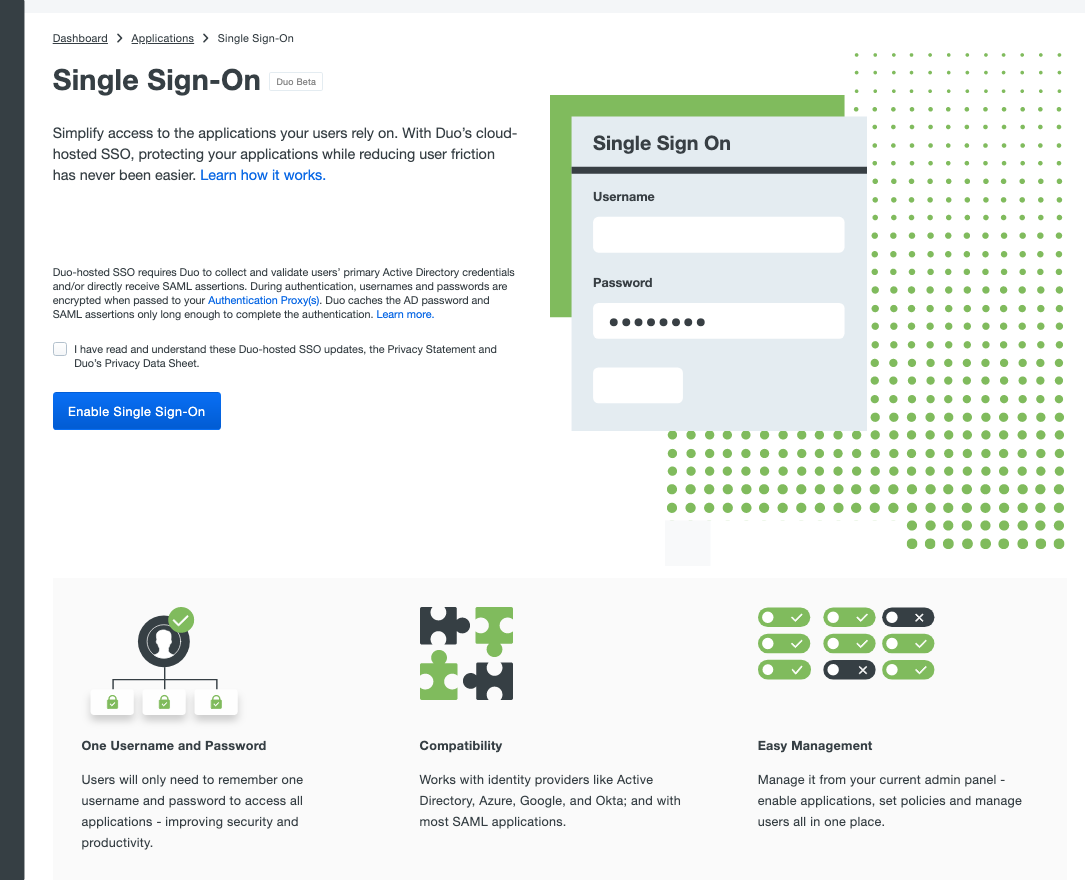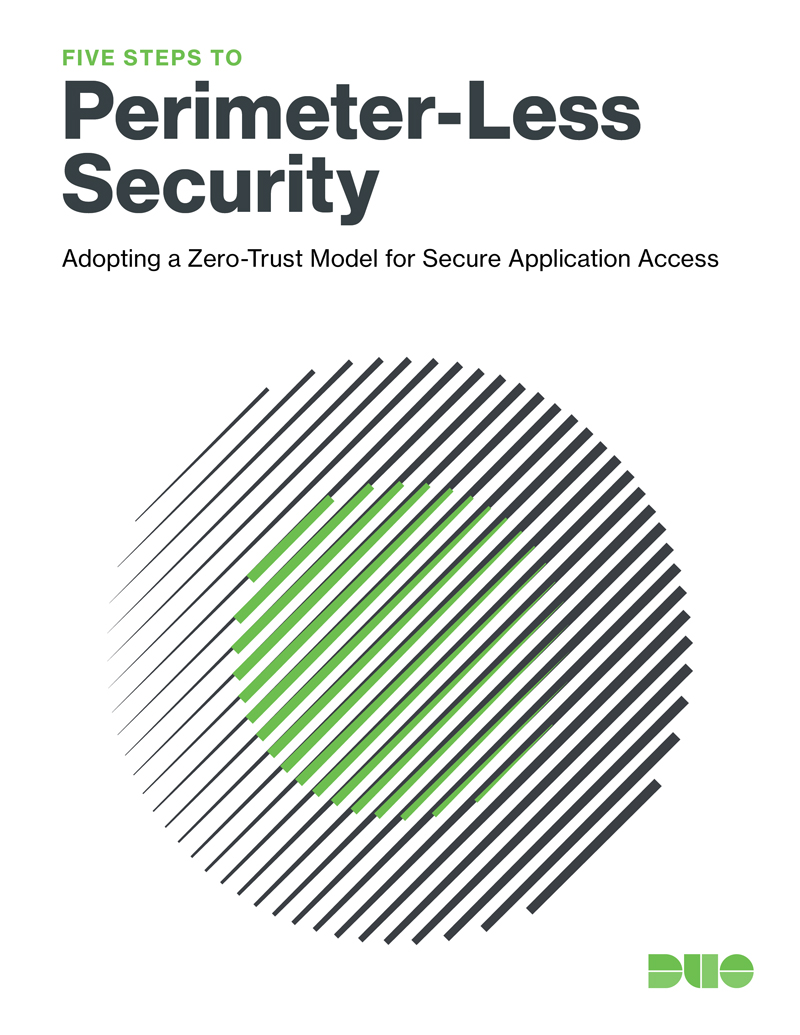
Introducing Duo-Hosted SSO
Your users are human and understandably can take security shortcuts like reusing passwords or making them simple and easy to remember. Unfortunately, that can also make it easier for passwords to be compromised. Employees can access those cloud applications from any location and device. That gives them the flexibility to work where and when they want but can expose your data to risky and compromised devices. Luckily there are solutions to mitigate these risks and Duo is here to help!
Included at no additional cost in our MFA, Access and Beyond editions, our Duo-hosted SSO a new cloud service that makes it easy for you to set up and protect users and applications. Your users will be able to access multiple applications with one username and password.
Combined with our strong multi-factor authentication, device trust and access controls, you will have an easy way to secure application access and enable the flexibility users want.
Duo’s SSO is designed from a security-first perspective and allows you to configure access policies that can differ by application, depending on the sensitivity of its data and the privileges of the user. This allows you to reduce user friction while protecting your most important assets.
The Duo-hosted SSO beta will be available to US deployments starting this week – look for the set-up option in your admin panel. You can learn more about Duo-hosted SSO and check if your account is eligible by visiting our documentation.

In the coming months, be on the lookout for more great features like Duo Central which will allow users to launch applications and more from a central location.
If you would like to help us shape the future of Duo’s SSO please let us know.

**Five Steps to Perimeter-Less Security: Adopting a Zero-Trust Model for Secure Application Access**
In this ebook, we’ll take you through five steps to help you move beyond perimeter security and grant access to applications based on user identity and the trustworthiness of devices.
Advertise on IT Security News.
Read the complete article: Duo-Hosted SSO (Single Sign-on) Public Beta Is Here!